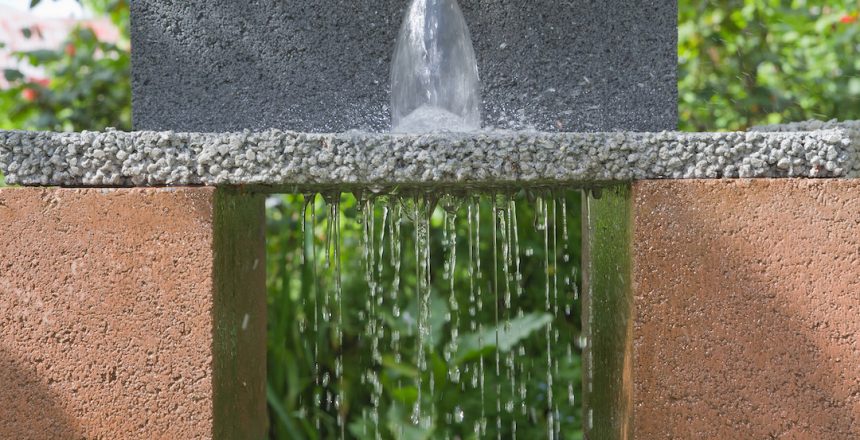Concrete is a key component of today’s construction projects, whether it’s industrial farming, home construction, or infrastructure. Its versatility and strength make it a near-perfect material for almost any application, but it’s also excellent for projects that require energy efficiency. Although there are nearly countless ways to create concrete, there are 5 types of concrete in construction that are important to know.
How Concrete Is Made
Concrete is a mixture of components, but it most commonly consists of water, cement, and aggregate (larger rocks or other materials). After adding water, concrete is at first easy to form and shape. Soon after, the cement begins to cure, leading to the concrete hardening. That hardening process can take anywhere from 60 minutes to a day, depending on the concrete’s ratio and type of materials.
The result: a strong, durable material that can be tailor-mixed for different applications, ranging from roadways to retaining walls. The types of concrete a construction company uses depend on a few key factors: strength, durability, heat and radiation resistance, and workability.
Why Are There Different Types of Concrete?
The types of concrete used in construction vary in their weight, strength, viscosity, and durability. These differences allow the concrete to be poured into forms more easily when necessary, to aid in water runoff management for certain surfaces, or simply to look more decorative. By changing the ratio of water, cement, and aggregate, as well as trading or leaving out aggregate components, construction companies have the flexibility of building several different structures with the same basic technology.
5 Important Types of Concrete in Today’s Construction
With thousands of years of research, development, and practical application, the types of concrete available today have an incredible range of uses. Out of the vast array of concrete types, we’re highlighting five types that are crucial to concrete construction today.
Reinforced Concrete
Concrete is strong on its own, but when combined with structural frameworks it can be nearly indestructible. Reinforced concrete incorporates a pliable framework within the concrete itself to help add to its tensile strength. In most cases, this framework is what we know as rebar, although it can also be wire systems or even fibers. By adding a framework, the concrete gains the strength needed to withstand heavy loads, strong winds, and sustained use with less damage.
This type of concrete forms the roads we drive on, as well as many of the foundational pieces of large buildings. And in concrete dome buildings and structures, the rebar added within the rigid foam and concrete provides a large portion of the strength we know as a hallmark of dome construction.
Lightweight Concrete
By using lighter aggregate components, lightweight concrete can decrease density by about 60 lbs/ft3 while maintaining tensile strength similar to the same volume of normal concrete. The use of volcanic pumice, shale, and perlite makes this type of concrete lighter, while the decreased density adds thermal insulation and fire resistance.
On the downside, this particular type of concrete is harder to mix correctly and exhibits some limitations for protecting steel structures from corrosion. With too much water in the mix, lightweight concrete tends to result in more laitance layers. Too little water results in a weaker mix.
Today, lightweight concrete is commonly used for building bridges or foundational structures, as well as being used as a fireproofing agent around pipes.
High-Strength Concrete
As its name suggests, high-strength concrete is designed with a higher compressive strength than normal concrete. Specifically, any concrete rated with a strength of 8,000 psi or higher is considered high-strength. This type of concrete gets its strength from a reduction in water, added plasticizers, and the addition of materials like fly ash or furnace slag.
In practical applications, high-strength concrete can be used for large buildings to reduce overall material volume and cost without sacrificing structural integrity.
Pervious Concrete
Water can cause significant problems for concrete surfaces, and pooling water is a serious safety concern for roadways and runways alike. Pervious concrete offers a solution to these water runoff problems. Its combination of cement, water, and coarse aggregates is the secret to its usefulness.
Leaving sand out of the mixture for this type of concrete allows the cement and aggregates to leave large pores throughout the concrete. Heavy rainfall, which would typically collect in pools on top of normal concrete, simply drains through pervious concrete. And that means that roads don’t collect pools of water, and airports don’t have to worry about hydroplaning when aircraft land.
Shotcrete
While the actual ratio of materials is similar to normal concrete, shotcrete is unique in its application process and uses. Instead of form setting or casting in place, this type of concrete is sprayed into place, typically over steel rebar or another substrate. Its application process also consolidates the concrete rather than through manual or mechanical compression, as is the case with most other types of concrete. This also creates a stronger bond between the concrete and the substrate or reinforcement.
Shotcrete is an extremely important component of concrete dome construction. This application method allows concrete to be sprayed onto the foam insulation and rebar frame inside a dome’s airform. Its natural strength, combined with the steel reinforcement, makes this type of concrete a perfect choice for dome homes, stadiums, and disaster shelters.
Each type of concrete offers unique benefits and drawbacks, but knowing where to use each mixture is the most important part of concrete construction. This is where having an expert team behind your construction project comes in. Whether you’re building your dream home, exploring the possibilities of concrete domes, or working to design a large agricultural building, Brooks Construction carries nearly 80 years of experience and innovation into every project we undertake. Contact us and discuss your next project to see what Brooks can do for you.



